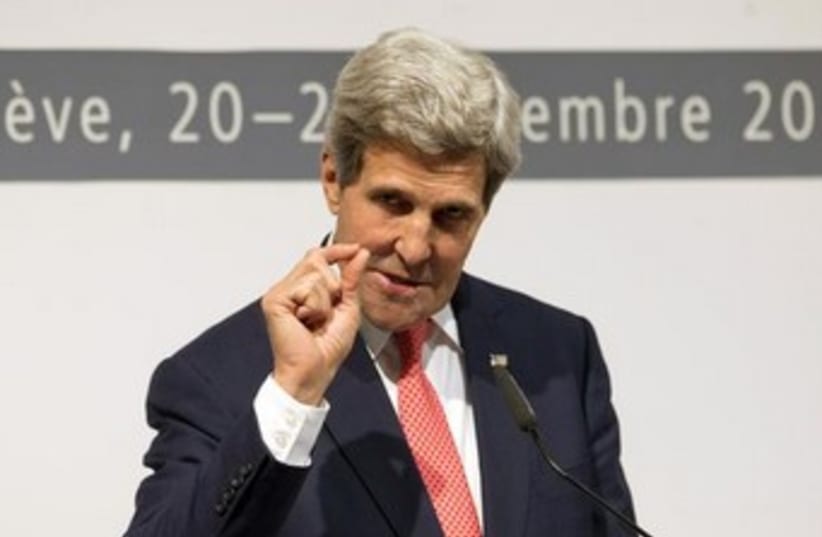There exists a reasonable and legitimate, but also fundamental, disagreement between the current Israeli government and the current American Administration with regard to how best to prevent Iran from developing the capacity to produce nuclear weapons. There is no real disagreement about this goal.
Nor are there significant differences regarding the basic facts on the ground. The intelligence agencies of both countries seem to have roughly the same information available to them, since much of it comes from the same or parallel sources. But each country draws different inferences – some empirical, others based on risk assessment – from the facts.
The United States is placing hope over fear in seeing a possible diplomatic opening with Iran, hoping that the supreme leader and his allies are not simply playing for time but may eventually consider dismantling, or least not moving forward with, a nuclear weapons program that they deny seeking, but that both the United States and Israel strongly believe is their goal. Israel, which is at far greater and more immediate risk from a nuclear armed Iran, places fear over hope and believes that it is more likely that Iran is using the six month negotiating period to weaken the sanctions against it while doing little or nothing to halt its march toward atomic weapons.
The reality is that no one, except the Iranian leadership – not nuclear experts, not outside Iranian experts, not American intelligence and not Israeli intelligence – knows for sure which of these scenarios, with or without significant variations, is closer to the truth. Indeed, it is not 100% certain, though it is likely, that the Iranian leadership itself may be in a state of flux with regard to its ultimate actions at the end of the six month period. If that is the case, the United States believes it can more effectively influence this internal decision-making process by opening up the prospect of ending the sanctions and welcoming Iran back into the community of nations, while always maintaining the possibility of a military strike if diplomacy fails. Israel believes that the most effective way to influence this process (if a way even exists) is to maintain both tough sanctions and a realistic military option. No one can be sure which, if either, of these approaches carries a better prospect for a successful outcome.
The only thing that is absolutely certain is that it has always been an important Iranian goal to create a significant gulf between Israel and its most important ally, the United States. The Iranian leadership understands that these countries have very different red lines, because they have very different military capabilities in terms of when they must take military action in order to effectively halt Iran’s progress toward nuclear weapons. They know how to exploit these different red lines, as well as the different risk-benefit calculations that each nation must make based on military and geopolitical considerations.
Accordingly, the big winner so far has been Iran, since it has succeeded in widening the gulf between Israel and the United States.
We can do something to narrow this widening gulf, and we can turn Iran’s short term victory into a long term victory for the forces of peace who share a commitment to prevent—rather than try to contain—a nuclear armed Iran. The United States and Israel should now work together, not only on a joint approach to the negotiations over the next six months that are designed to produce a more permanent agreement, but also on a unified plan in the event Iran refuses to offer or accept a reasonable next step.
Congress too can play a role in their joint efforts, by now authorizing the President to increase sanctions if it becomes clear that Iran has simply been playing us for time and has no real interest in ending its quest for nuclear weapons.
More controversially, but also more effectively, Congress could now authorize the president to take surgical military action against Iran’s nuclear weapons program if the Iranians cross a specified red line.
This prior approval has become necessary because of what occurred when Syria crossed President Barack Obama’s red line by using chemical weapons to kill many of its own citizens. The president decided that although he was not constitutionally obligated to seek congressional approval, he would do so. It was unclear whether such approval would have been forthcoming, thus turning a red line into – at best – a yellow line. The situation with Syria seems to have worked out well, with a diplomatic resolution now in process. But the message to Iran has been weakened by the way in which the Syrian resolution developed. The Iranians now regard Obama’s threat to deploy the military option as a last resort to prevent Iran from developing nuclear weapons, as at worst a conditional threat, subject to congressional approval, which might or might not be forthcoming if the President sought it.
Such a conditional threat is not nearly as effective a disincentive against crossing a red line as would be an unconditional threat— unconditional because it would already have been authorized by Congress.
Whether one agrees or disagrees with specific proposals for joint actions – diplomatic, economic and, if necessary, military – the important point is now to narrow the gap that Iran has helped to create between two close allies, who share common peace-seeking goals but have understandable differences about how best to achieve these goals.
